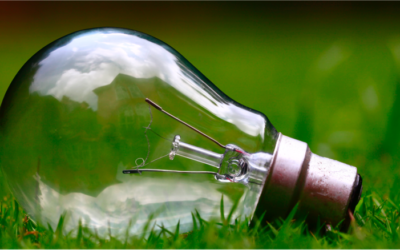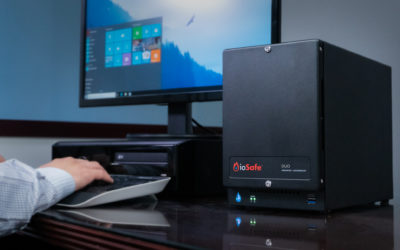How Long Does an External Hard Drive Really Last?
 As a Customer Support Technician for hard drive tool technologies, I’m often approached by customers asking: “How long will my external hard drive last?” And then the follow-up, “When will a hard drive failure happen?” or “When can a hard drive be expected to fail?”
As a Customer Support Technician for hard drive tool technologies, I’m often approached by customers asking: “How long will my external hard drive last?” And then the follow-up, “When will a hard drive failure happen?” or “When can a hard drive be expected to fail?”
The answers aren’t exactly clear-cut, but there’s a consensus for how long you might expect a typical hard drive to work, whether it’s external or internal.
So let’s get to it: What’s your hard drive’s expiration date?
First, let’s start with hard disk drives (HDDs). The simplest answer is that they can run smoothly for three to five years. This means any HDD, whether it’s external or inside of a system. Asking about the longevity of an external enclosure—a metal or plastic housing designed to cover and protect a disk drive from damage—is a different question altogether. Truth is, it varies.
Even if the enclosure fails, the drive is still recoverable. You can just get a new replacement enclosure, so that isn’t a huge issue. What matters is how you prevent losing the data stored on the drive itself. Hard drive manufacturers typically provide a “mean time between failure” (MTBF) and/or “annualized failure rate” (AFR) for their drives. MTBF and AFR are linked, but they represent slightly different types of data. The MTBF describes an estimated amount of hours of runtime before mechanical failure in a drive. The AFR will describe a drive failure possibility percentage after a full year of use.
It’s fair to note, however, that the way HDDs are mechanically built give them somewhat of a random failure potential. This makes it harder to predict exactly how long a hard drive will last. Failures occur for various reasons, ranging from temperature to magnetic field conditions to a manufactured defect.
What about SSDs?
Due to their no-moving-parts design, solid state drives (SSDs) have a much more predictable failure rate than the mechanical nature of HDDs.
SSD failure depends on the amount of data, AKA terabytes written (TBW), rather than a certain amount of uptime. With some careful calculations, you may be able to find a rough estimate of how long it’ll be until an SSD fails. SSDs don’t quite reach the capacities of HDDs, so it’s more likely that you’d use an HDD as your external hard drive to store data.
Simple, effective habits for better hard drive health
Though the average might be three to five years, hard drives can theoretically last much longer (or shorter, for that matter). As with most things, if you take care of your hard drive, it will better last to its potential.
Here are some of the easiest precautions you can take with your hard drive to give it the best chance against premature failure:
- Treat your drive with physical care. Hard drives are built in a way that any physical damage can really mess things up… and your data can be lost in an instant. When handling a hard drive, handle it carefully, like a baby, or an egg (like the one you’re supposed to keep alive for high school science class, not the one you crack for breakfast).
- Control the external temperature. Hard drives are going to get warm while they’re powered on and active. That’s a given. It’s important to keep hard drives away from warm or hot conditions that might contribute more heat to the drive, thus putting more unnecessary stress on it (unless it’s meant to withstand high temperatures). Damaging a drive with cooler temperatures is much harder to do than warmer temperatures. It’d need to be really cold.
- Only power on the drive when you need to use it. Whether it’s an internal or external hard drive doesn’t matter. This applies to both. Truth is, the more your hard drive is active, the more it’s working—even if it is idle—and the more it’s working, the more it suffers from wear and tear.
- Eject your external drive from your host system. Do this before physically disconnecting or powering off the enclosure. This will help ward against potential data corruption, which can contribute to a more devastating hard drive failure in the long run.
- Try not to mess with the connections. Avoid plugging/unplugging your external hard drive too often. This could damage the connection, which can also lead to data corruption. It becomes an even bigger issue when you aren’t as careful as you should be when dealing with this connection. And because it’s a mindless task, you might not even realize you’re depleting the longevity of your hard drive. Set it aside, tape the cable down to your desk, or whatever you have to do to make sure it doesn’t move.
While these are some basic precautions you can take to take better care of your hard drive, there’s a whole lot more you can do. If you’d like more technical guidance, you can check out these in-depth tips from Remo Software.

The bottom line
 How long a hard drive lasts comes down to—not a total shocker—taking good care of your drive. Averages will be averages, but that doesn’t mean failure is scalable. You can try to plan around estimated failure rates, but you always want to make sure you have your data in at least two different places, whether local or in the cloud, to ensure you’re prepared for hard drive failure, whenever it happens.
How long a hard drive lasts comes down to—not a total shocker—taking good care of your drive. Averages will be averages, but that doesn’t mean failure is scalable. You can try to plan around estimated failure rates, but you always want to make sure you have your data in at least two different places, whether local or in the cloud, to ensure you’re prepared for hard drive failure, whenever it happens.
Originally published Mar 5 2020, updated Mar 9 2020

Scot Gulley
Customer Support Technician
Helping CDSG customers across the globe. Recent IT grad, pancake lover, and basketball enthusiast.
Related Blog Posts
Off-Facebook Activity is Here: 3 Facebook Data Privacy Settings You Can Change Right Now
On Data Privacy Day 2020, Facebook launched a new privacy control tool for users called Off-Facebook Activity. Much like...
Power Outages are the New Normal in Our California Community
My small community—nestled in the foothills of Northern California—is one of 34 counties that experienced the first of...
Introducing the Fireproof and Waterproof ioSafe Duo
Today, we’re introducing the ioSafe Duo, a two-drive fireproof, waterproof storage device that is ideal for people who want...



